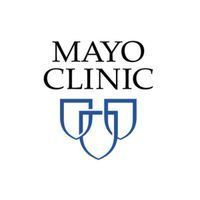
Researchers Identify Distinct Differences in Acute Optic Neuropathy of MOGAD vs Nonarterior Anterior Ischemic Optic Neuropathy

Between those with NMOSD and NAION, the data showed differences in disc edema, peripapillary nerve fiber layer thickening, vision loss, and the symptoms that preceded vision loss.
While acute unilateral optic neuropathy with disc edema may be found in both patients with myelin oligodendrocyte glycoprotein antibody-associated disease (MOGAD) or nonantereritic anterior ischemic optic neuropathy (NAION), newly published data suggests a detailed history, the degree of peripapillary nerve fiber layer (pRNFL), and visual outcomes can help differentiate the 2 conditions and determine cases that would benefit from additional work-up.1
Published in Neurology, investigators aimed to determine differentiating factors between MOGAD-optic neuritis (MOGAD-ON) and (NAION) and the frequency of serum MOG-IgG false positivity among patients with NAION. Conducted at tertiary neuro-ophthalmology centers, 64 patients with MOGAD who presented with unilateral ON as their first attack at age 45 years or older were compared with 64 age- and sex-matched patients with NAION. NAION diagnosis was validated by acute vision loss with optic disc swelling and exclusion of other causes, such as arteritic anterior ischemic optic neuropathy.
Led by Nanthaya Tisavipat, MD, a doctor of medicine at
Using multivariate binary logistic regression methods, results also showed that eye pain was strongly associated with MOGAD-ON (OR, 32.905; 95% CI, 2.299-473.181; P = .010), while crowded optic disc (OR, 0.033; 95% CI, 0.002-0.492; P = .013) and altitudinal visual field defect (OR, 0.028; 95% CI, 0.002; P = .016) were strongly associated with NAION. Of note, maximum vision loss beyond 48 hours trended toward an association with MOGAD-ON (OR, 12.431; 95% CI, 0.925-166.982; P = .057).
In terms of the features that predicted NAION over MOGAD-ON, investigators wrote, "Each of these classical features of NAION can be found in around 10%–30% of patients with MOGAD-ON. However, when considered together with optic disc edema, only 1 (1.6%) patient with MOGAD-ON in our cohort had all of these 3 NAION predictors combined. If eye pain was included as a differentiator, these combined features had 100% specificity in differentiating MOGAD-ON from NAION."
In an additional analysis, the reseachers identified 212 consecutive patients with NAION seen at Mayo from 2018 to 2022, of which 5 (8%; 95% CI, 1%-14%) had false-positive serum MOG-IgG result. This group had titers of 1:20, and 4 patients (80%) had MRI which confirmed the absence of optic nerve enhancement. The other patient had classic painless altitudinal vision loss on awakening at the age older than 50 years with segmental disc edema and no recovery.
READ MORE:
Between the 2 groups in the study, 81% of patients with MOGAD-ON were on high-dose steroids, and 8% received steroids plus plasma exchange or intravenous immunoglobulin, In comparison, only 8% (n = 5) of patients with NAION were treated with high-dose steroids, 3 of which were initially misdiagnosed as optic neuritis. No treatment was given in 10% of MOGAD-ON cases vs 83% of NAION cases (P <.001).
A notable finding was that disc edema and pRNFL thickening were less pronounced in unilateral MOGAD-ON compared with NAION. Specifically, 45% of patients with MOGAD-ON had moderate-to-severe disc edema vs 76% of those with NAION (P = .004). Investigators observed an estimated pRNFL thickening of 25 (IQR, 11-108) μm in MOGAD-ON and 102 (IQR 70–140) μm in NAION (p < 0.001). Analyses showed no acute changes in the cell-inner plexiform layer thickness in either disease.
Tisavipat et al noted that the major limitation of the study was the retrospective design, as well as some imbalance in racial distribution between the 2 patient groups. In addition, NAION was stressed as a clinical diagnosis, and therefore it was impossible to completely exclude atypical optic neuritis or MOGAD-ON in some patients in the NAION cohort.
"Over 90% of patients with NAION in our cohort were not tested for MOG-IgG. However, restricting NAION cases to those who received MOG-IgG testing would have created a bias toward atypical NAION cases,” the study authors wrote. “A positive MOG-IgG test is also not diagnostic by itself since it also requires clinical and radiologic features of optic neuritis to fulfill the 2023 diagnostic criteria for MOGAD."
REFERENCE
1. Tisavipat N, Stiebel-Kalish H, Palevski D, et al. Acute optic neuropathy in older adults: differentiating between MOGAD optic neuritis and nonarteritic anterior ischemic optic neuropathy.
Newsletter
Keep your finger on the pulse of neurology—subscribe to NeurologyLive for expert interviews, new data, and breakthrough treatment updates.



















